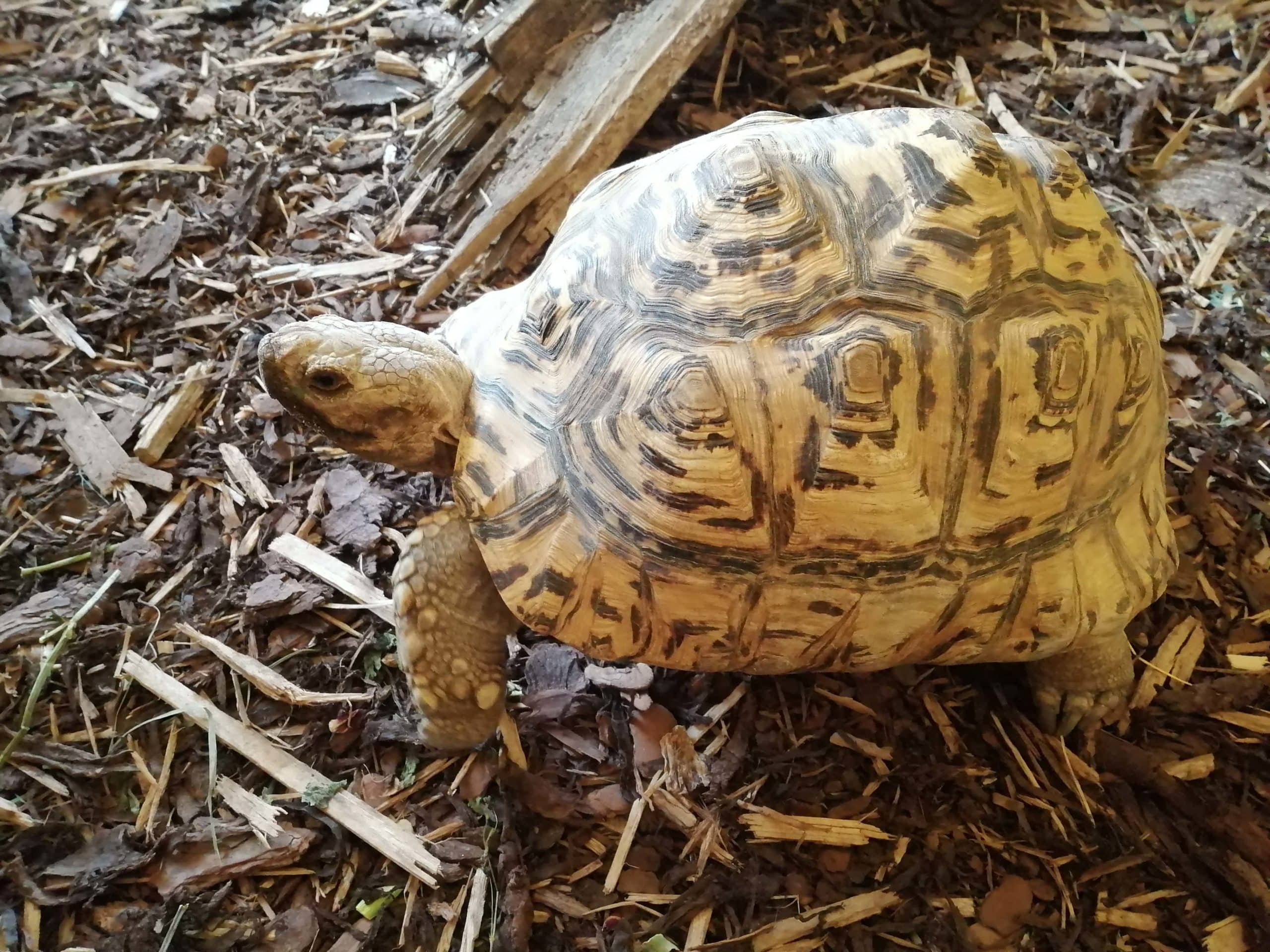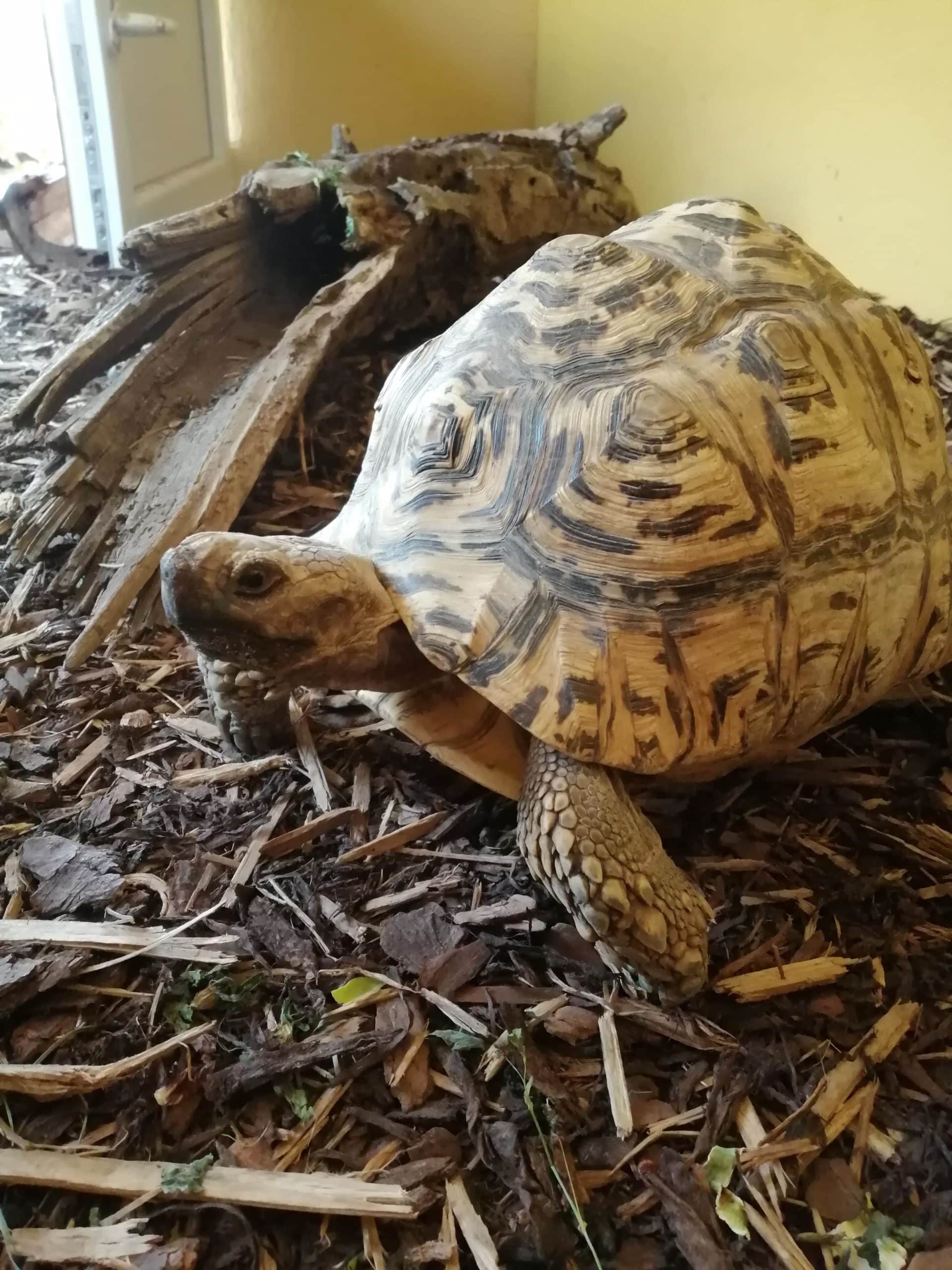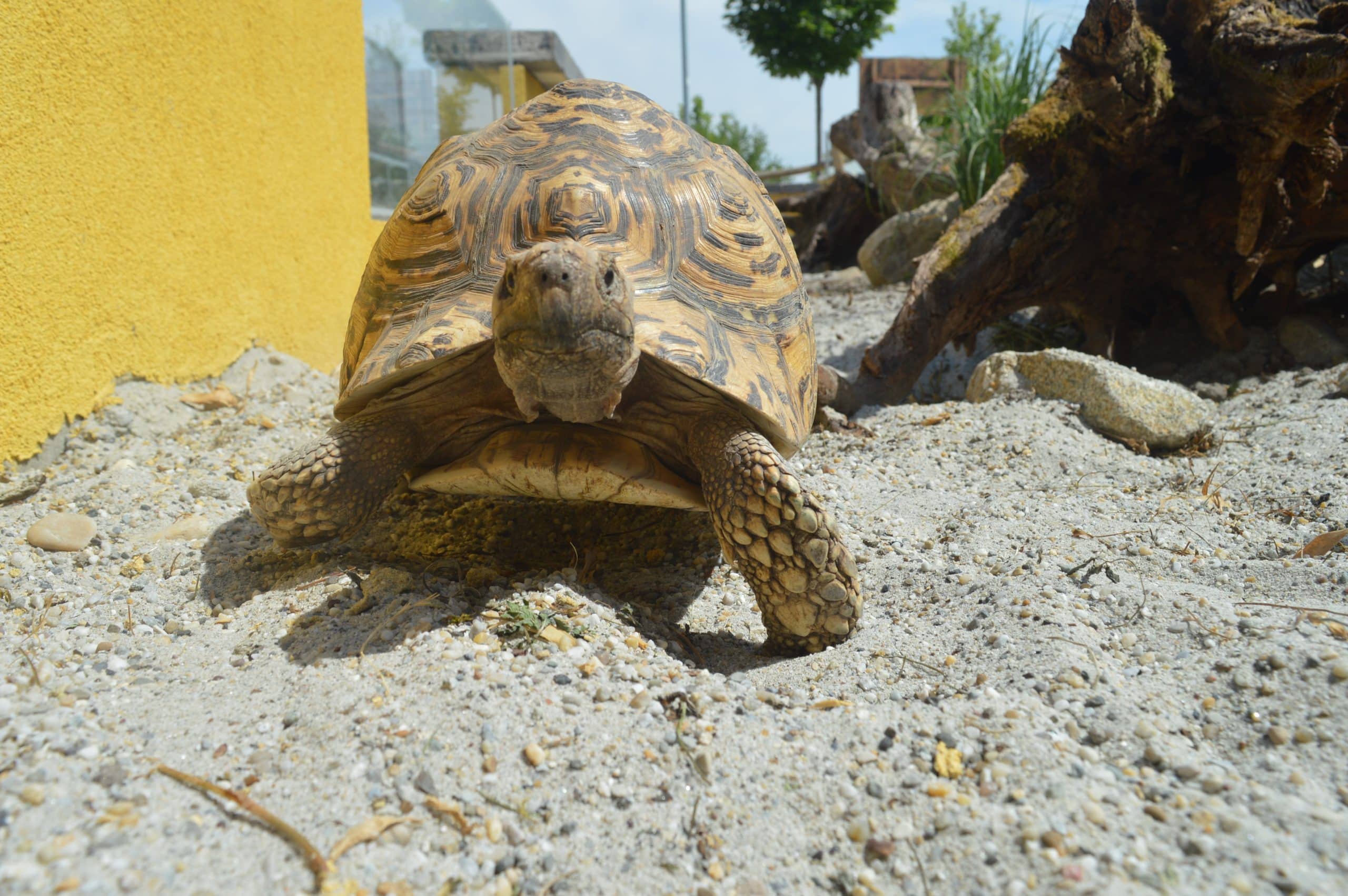The carapace is high and arched with steep, almost vertical sides. It is coloured with black spots or lines on a yellow background, especially in young individuals. In older individuals, the markings tend to fade to a faint brown or grey. The head and limbs are uniformly coloured yellow to brown.
This tortoise is a grazing species that prefers semi-arid, thorny to grassy habitats. In both very hot and very cold weather, it may stay in abandoned fox, jackal, or wild boar dens.
They are characterised by diurnal activity, being less active during hot weather and dry periods.
The leopard tortoise reaches sexual maturity between 12 and 15 years of age. This species is not particularly sociable. During the breeding season, males fight over females by bumping into their competitors. The female digs a hole for laying. It then leaves the eggs. Numerous predators of eggs and hatchlings include ravens, snakes, jackals, and crows. Adults have few natural predators.
The exceptionally large leopard tortoise can reach 70 cm and weigh of 40 kg.
Sometimes, they gnaw on bones to get the calcium needed for the development of bones and their eggshells.
Seeds can pass through the gut of turtles undigested, so the leopard tortoise plays an important role in the dispersal of plant seeds.
They usually move slowly. But when they get scared, they can sprint. They can also swim thanks to the large lung space in their domed shell, which allows buoyancy.
A tortoise hisses when it is scared, but the sound does not always come out of its mouth. When they quickly pull their head and limbs into their shell, it pushes all the air out of their lungs, which can cause them to hiss.






